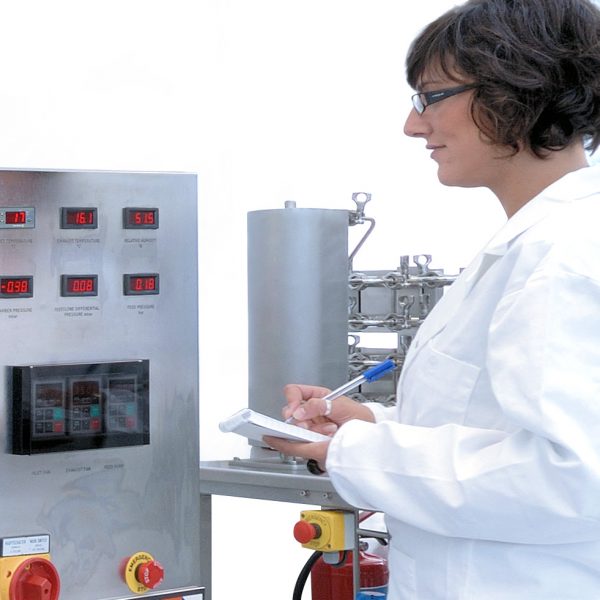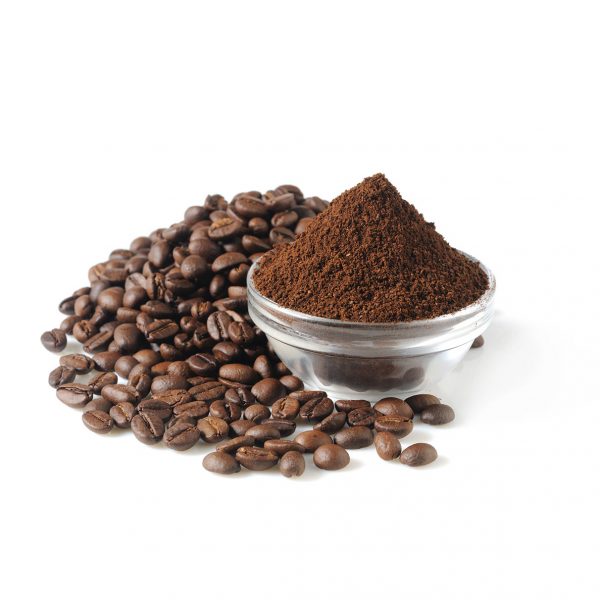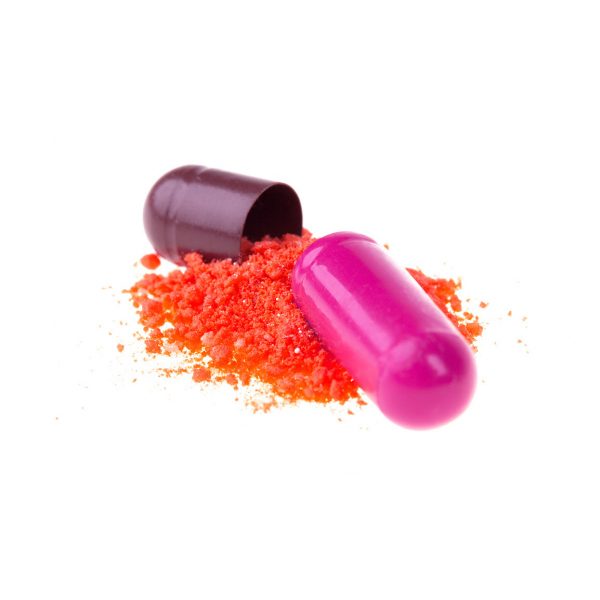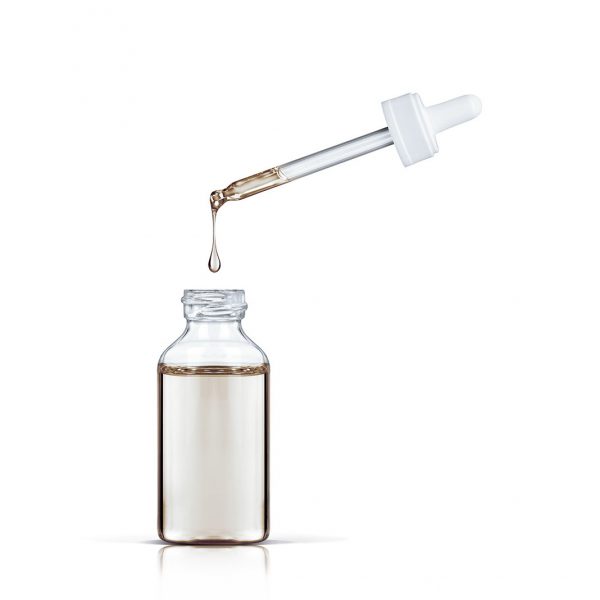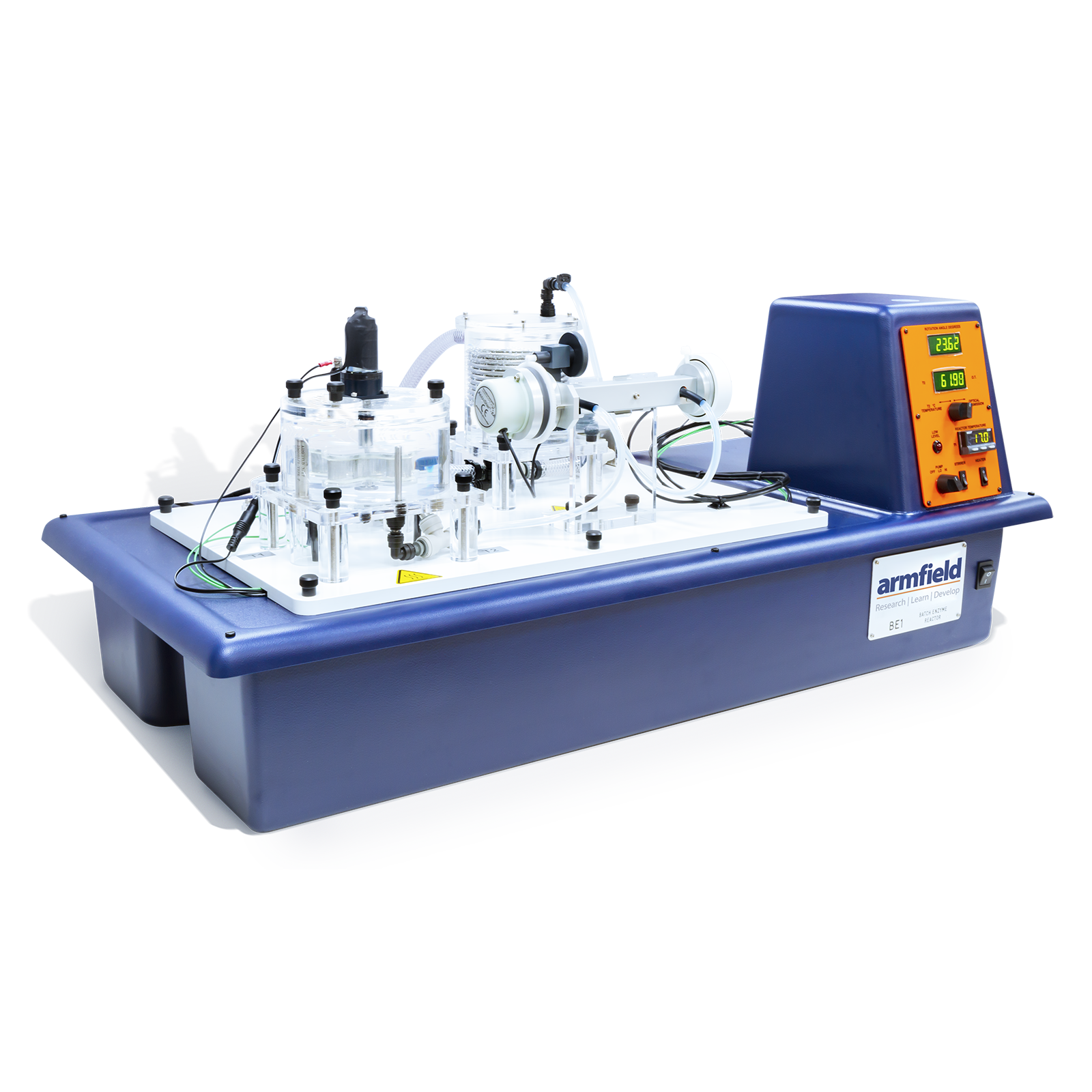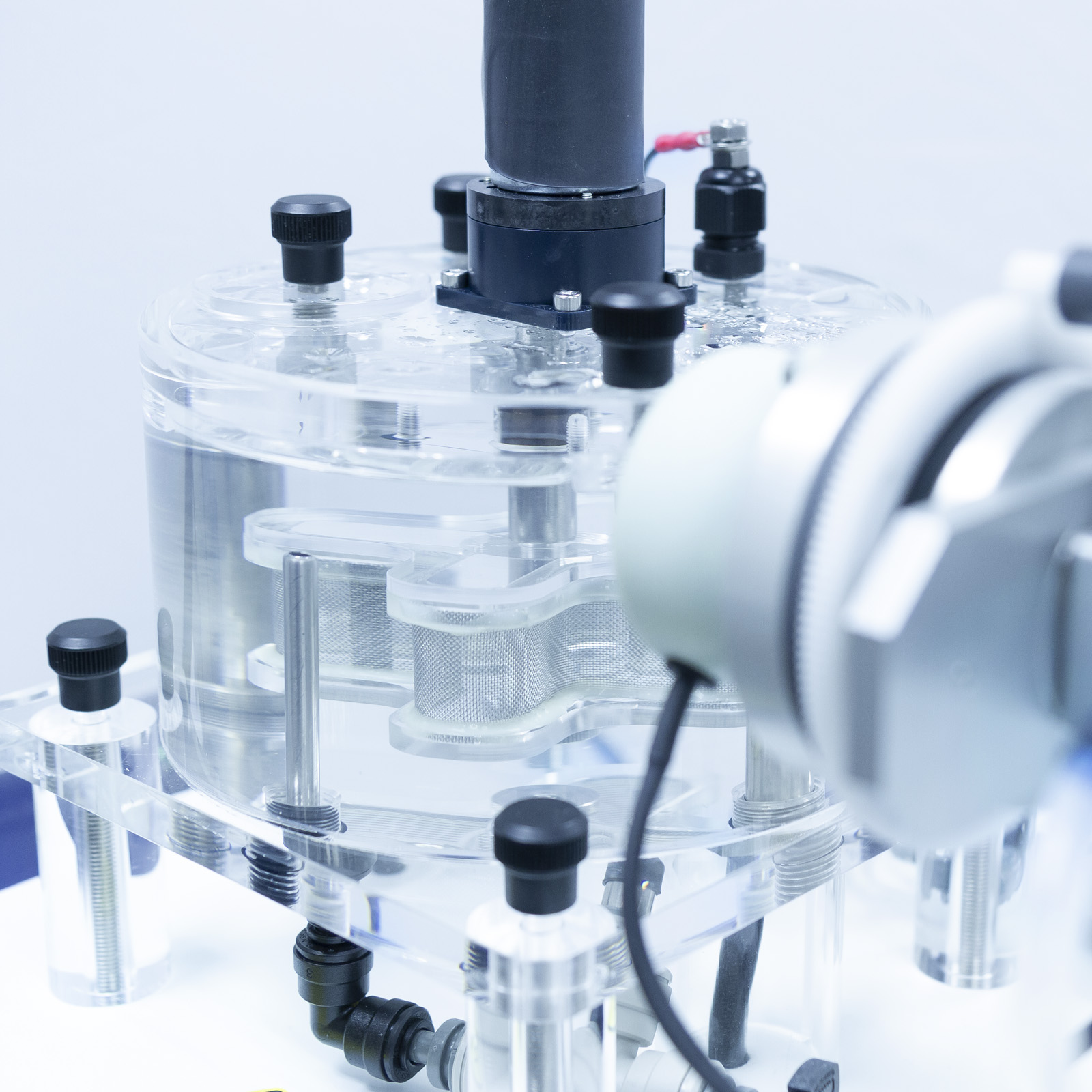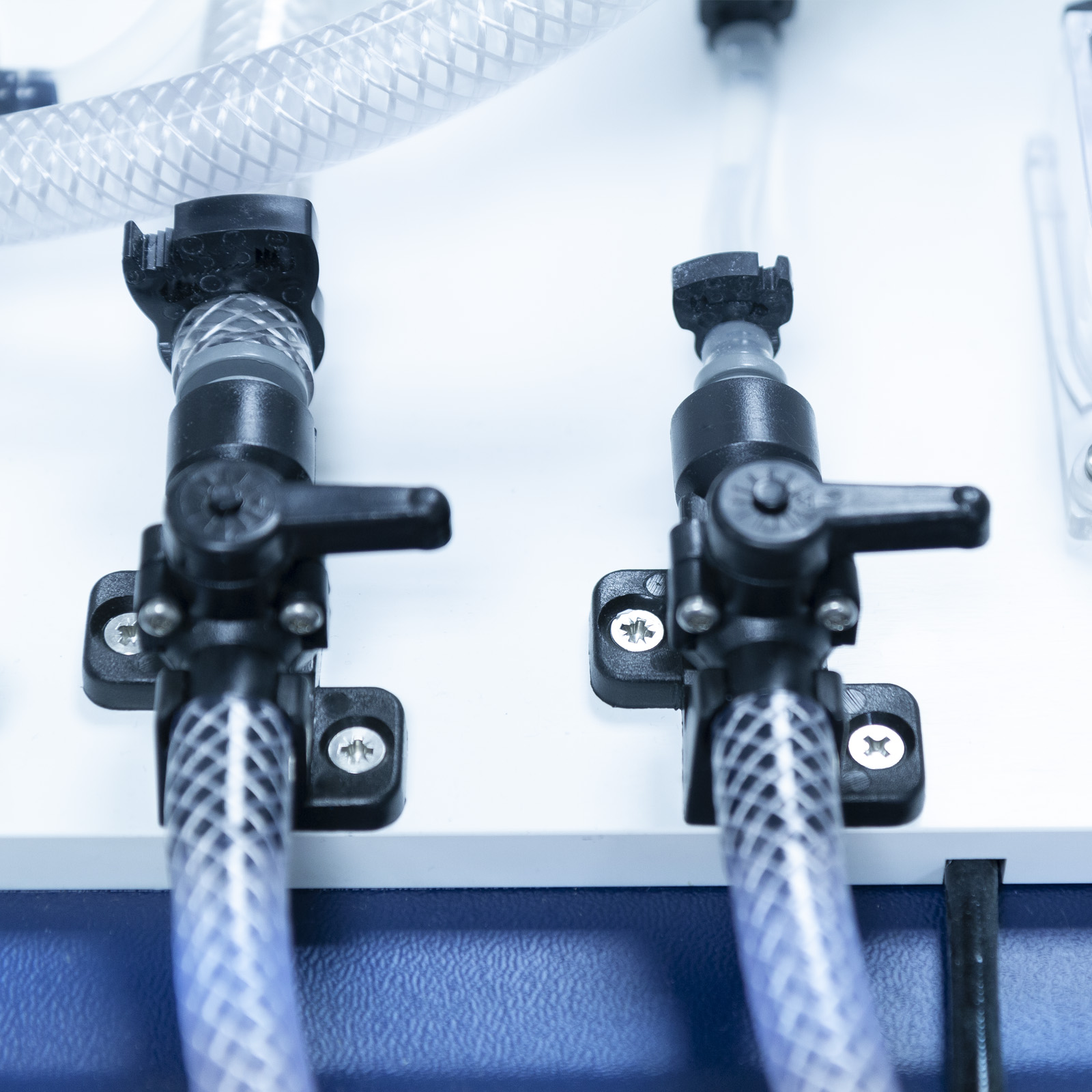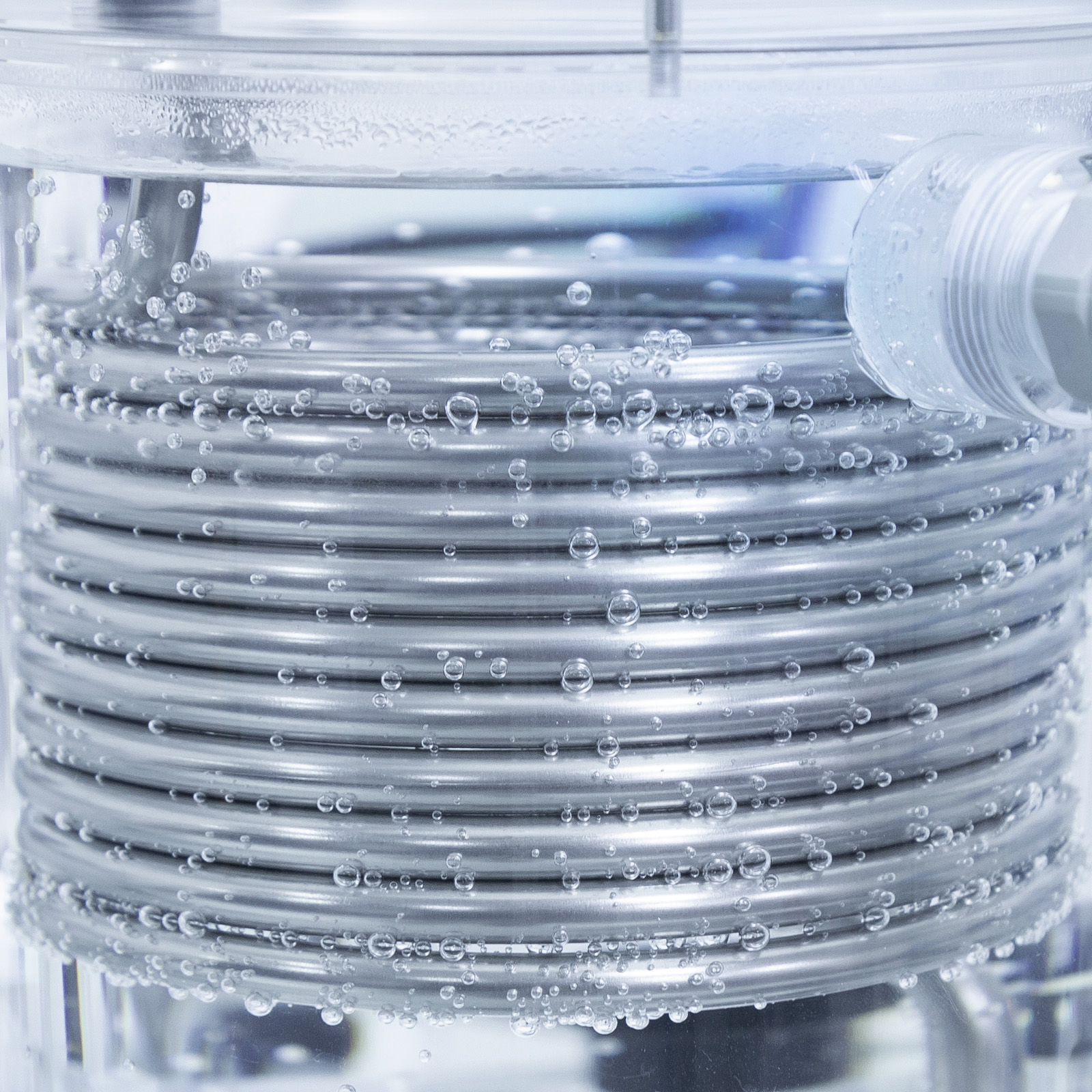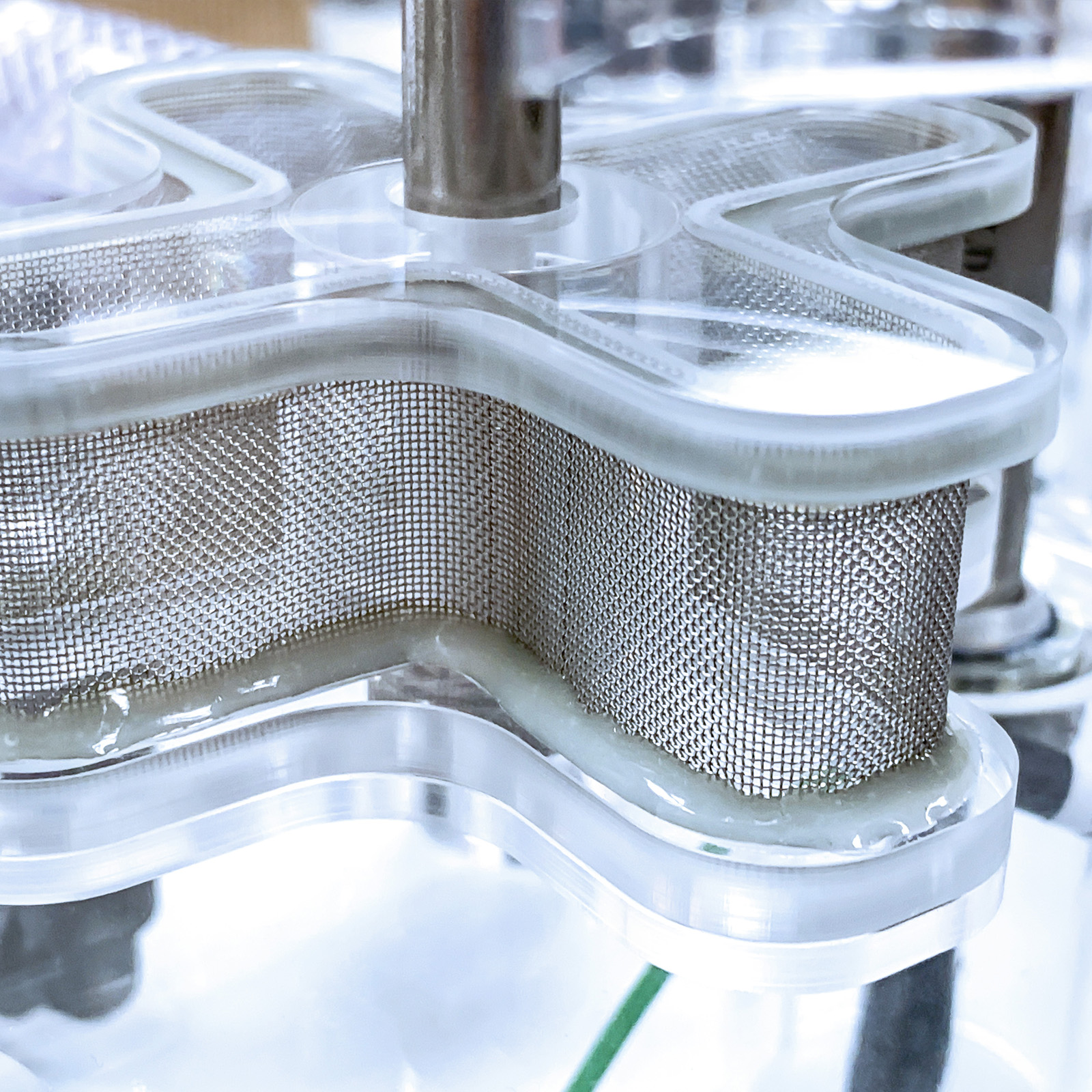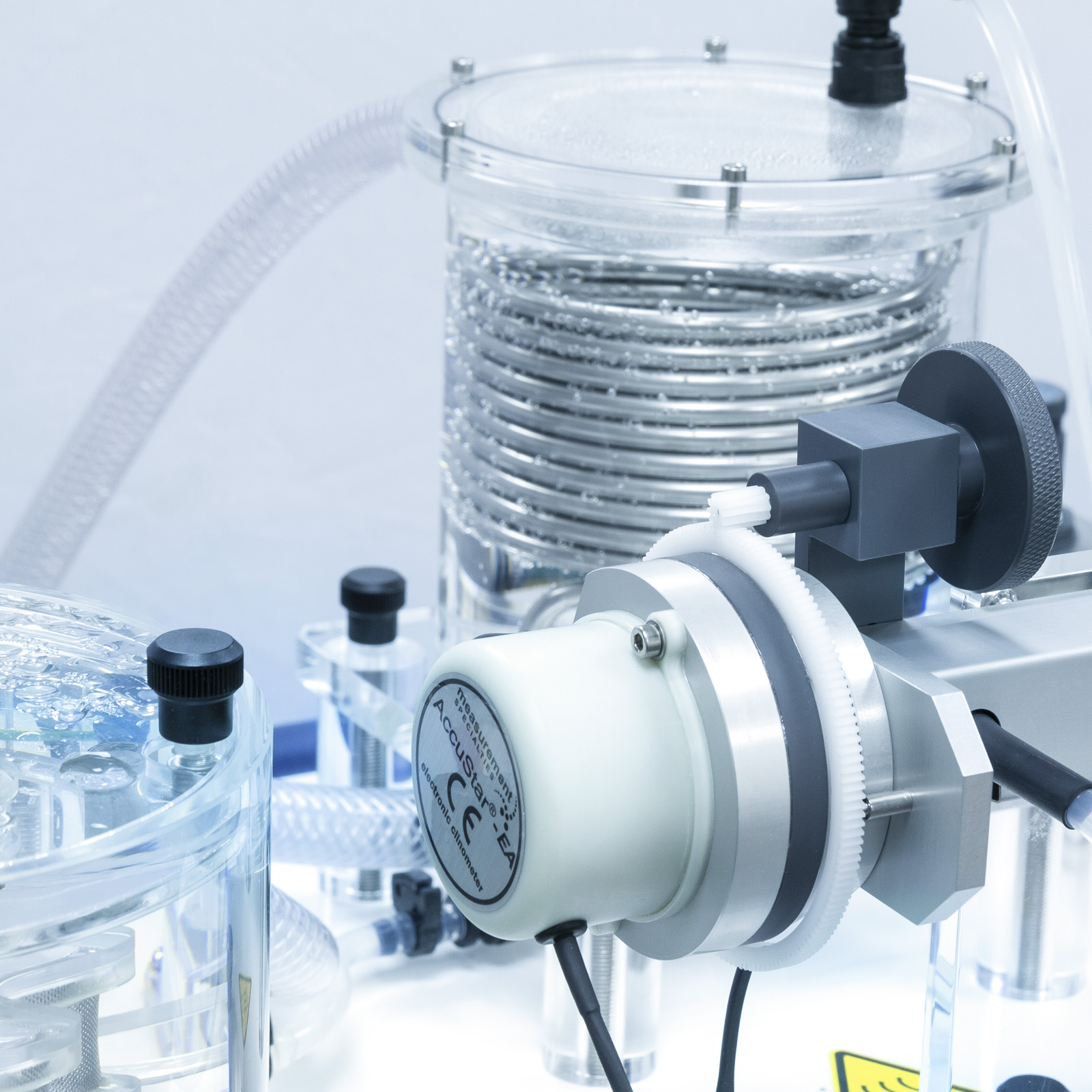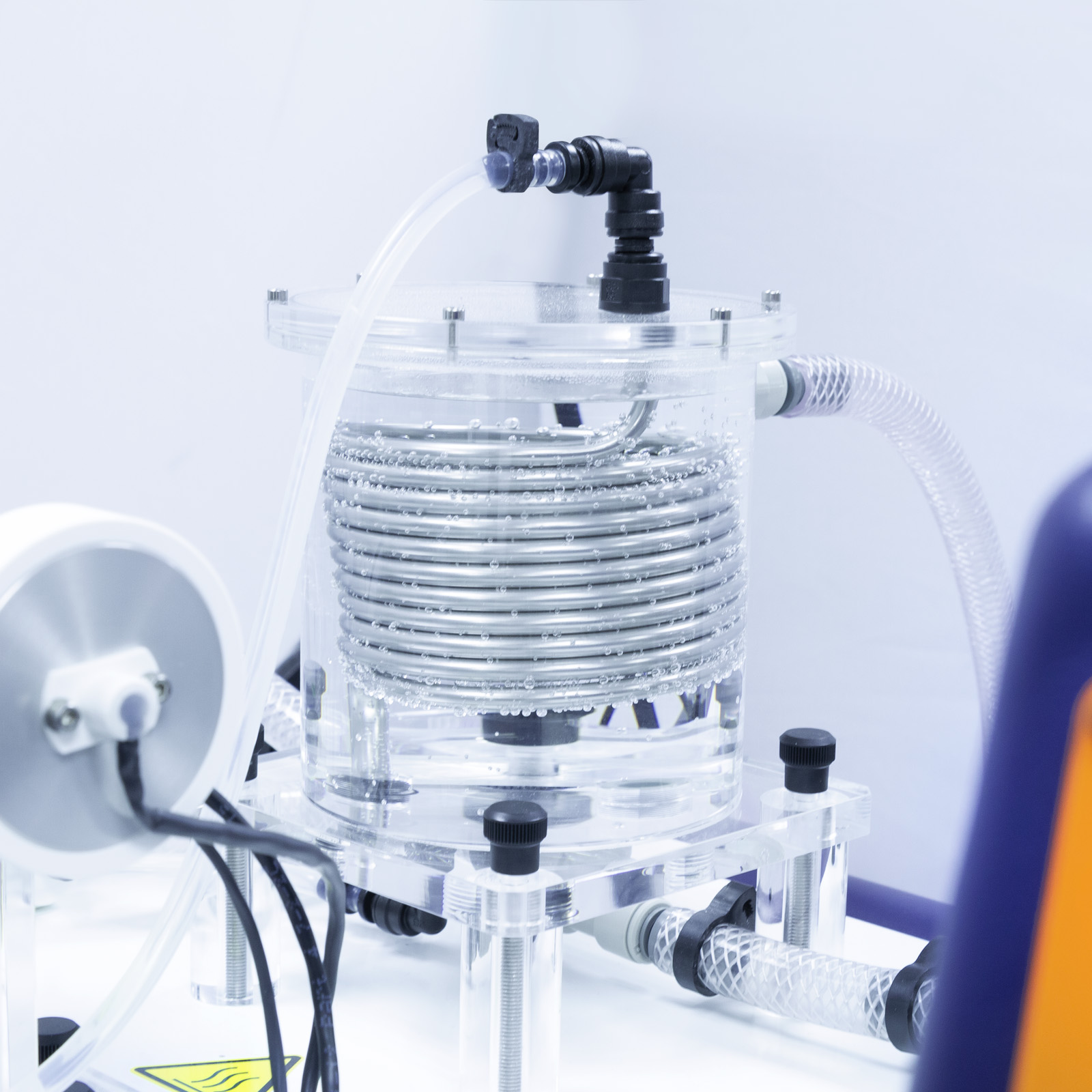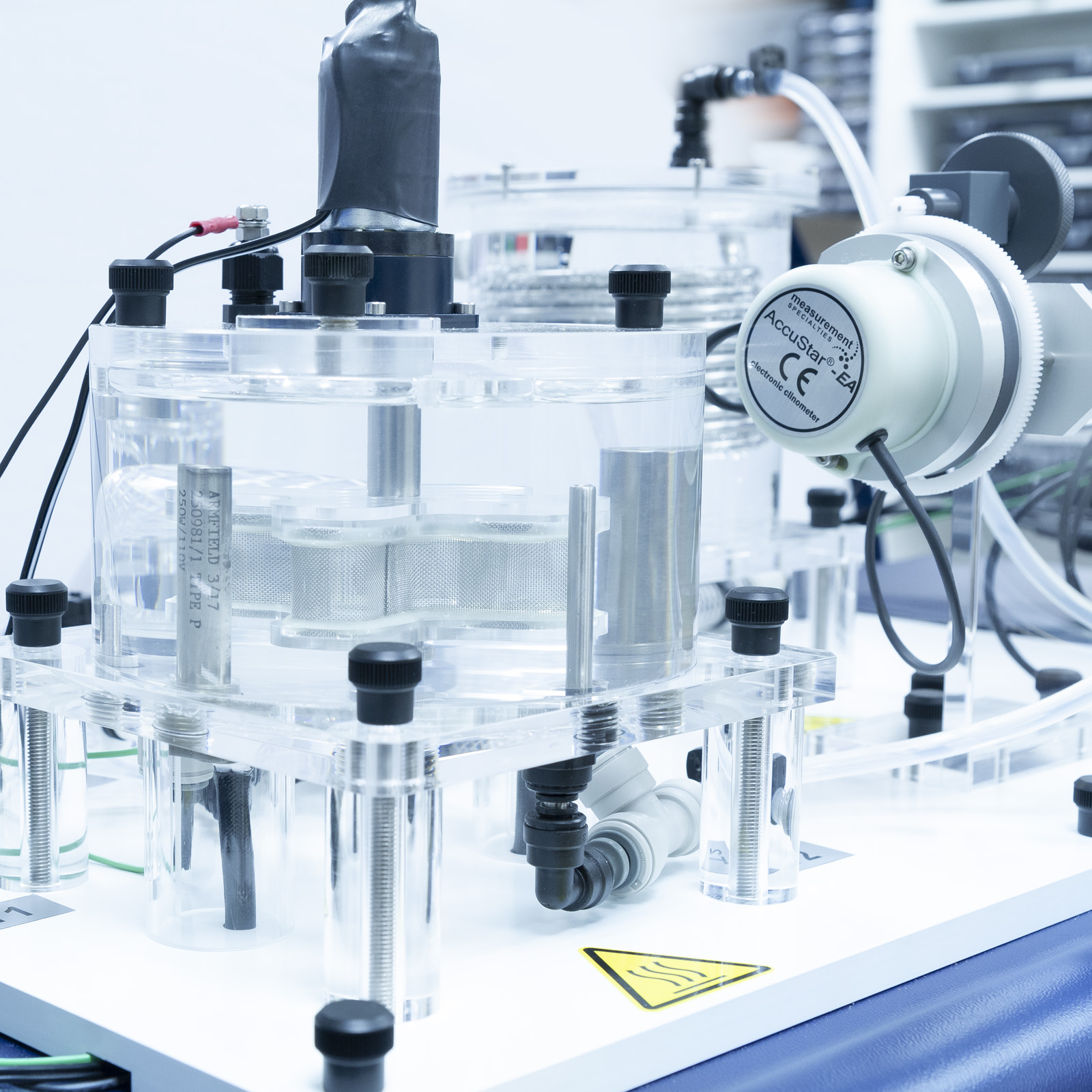BE1 Batch Enzyme Reactor
A batch enzyme reaction system that utilises the industrially important glucose isomerisation reaction, (converting glucose to fructose) catalysed by glucose isomerase. The purpose of the unit is to demonstrate batch enzyme kinetics and enzyme characteristics. The reaction takes place inside a stirred vessel where the stirrer itself is a porous basket inside which the enzyme is immobilised.
A polarimeter device, which is integral to the unit, monitors the glucose and fructose concentrations with time.
Description
A batch enzyme reaction system utilising the industrially important glucose isomerisation reaction (converting glucose to fructose) catalysed by glucose isomerase.
The purpose of the unit is to demonstrate batch enzyme kinetics and enzyme characteristics.
The reaction takes place inside a stirred vessel where the stirrer itself is a porous basket inside which the enzyme is immobilised.
A polarimeter device, which is integral to the unit, monitors the glucose and fructose concentrations with time.
The Batch Enzyme Reactor (BE1) introduces the student to the fundamentals of batch enzyme catalysis. It consists of a benchtop unit onto which is mounted a reactor vessel in which the glucose isomerase-mediated reaction takes place. The reactor itself is made of clear acrylic, which gives good visibility. A cruciform geometry impeller constructed from stainless steel mesh retains the immobilised enzyme while enabling efficient mixing with the liquid reactant (glucose solution).
The impeller is a variable-speed type and the reaction temperature is maintained using two heaters and a temperature sensor mounted within the reactor. These are linked to a PID controller, which is programmed to maintain the desired setpoint temperature. Safety interlocks prevent the heaters being activated when there is a low reactor liquid level or when the impeller is inactive.
A continuous sampling loop driven by a peristaltic pump removes liquid from the reactor and transfers it to a tubular coil heat exchanger, where it is cooled. It is then passed through a polarimeter where the angle of rotation of polarised light is measured. From this angle measurement, the concentration of both glucose reactant and fructose product can be determined. This eliminates the need for manual glucose assays. The measurement system relies on the fact that both glucose and fructose solutions rotate beams of polarised light, glucose to the right and fructose to the left. The polarimetry measurement method enables the progress of the reaction to be monitored online.
The polarimeter assembly consists of an elongated optical flow cell mounted between two polarising lenses, one of which is fixed (polariser) and the other being free to rotate (analyser). On the outside of the polariser is a light source and on the outside of the analyser is a detector, which detects the intensity of emitted light that has passed through both polarising lenses and the sample tube.
Attached to the analyser is an angle-measurement device. Both the optical transmission and the angle of rotation are relayed to electronic displays on the control console.
Technical Specifications
- A benchtop unit comprising a vacuum-formed ABS plastic plinth with integral electrical console onto which is mounted the stirred reactor vessel sampling circuit with peristaltic pump, tubular coil heat exchanger and polarimeter device
- A temperature sensor and heater mounted in the reactor vessel and linked to a PID controller for accurate reaction temperature control
- A polarimeter device measuring optical transmission and angle of rotation
- Protection devices for all electrical circuits
- Three displays: PID temperature control (reactor temperature), display for angle of rotation, display for optical transmission or temperature at polarimeter
- Sensor signals are routed to the USB port for connection to a (user-supplied) PC
- Comprehensive instruction manual with detailed laboratory teaching exercises
- Instructional capabilities:
– Principles of batch enzyme kinetics
– Factors affecting enzyme performance
– Principles of polarimetry and Biot-Savart law
Features & Benefits
Teaching exercise included to familiarise students with the following topics:
- Determination of Michaelis-Menten constants and specific enzyme activity through Michaelis-Menten and Lineweaver-Burk plots
- Determination of glucose and fructose concentrations through polarimetry
- Effect of environmental conditions (pH and temperature) on enzyme activity
- Demonstration of the Biot-Savart law
- Understanding the principles of batch enzyme kinetics
- Understanding the factors affecting enzyme performance
- Understanding the principles of polarimetry and the Biot-Savart law
BE1-DTA-LITE Education Software and Data Logging Accessory
BE1-DTA-ALITE – Education software and data logging accessory.
The user must have a PC with a USB port, running Windows 7 or above

Teaching exercises are included to familiarise students with the following topics:
- Determination of Michaelis-Menten constants and specific enzyme activity through Michaelis-Menten and Lineweaver-Burk plots
- Determination of glucose and fructose concentrations through polarimetry
- Effect of environmental conditions (pH and temperature) on enzyme activity
- Demonstration of the Biot-Savart law
Ordering specification
- A benchtop unit comprising a vacuum-formed ABS plastic plinth with integral electrical console onto which is mounted the stirred reactor vessel sampling circuit with peristaltic pump, tubular coil heat exchanger and polarimeter device
- A temperature sensor and heater mounted in the reactor vessel and linked to a PID controller for accurate reaction temperature control
- A polarimeter device measuring optical transmission and angle of rotation
- Protection devices for all electrical circuits
- Three displays: PID temperature control (reactor temperature), display for angle of rotation, display for optical transmission or temperature at polarimeter
- Sensor signals are routed to the USB port for connection to the users own PC running Windows 7 or above
- Comprehensive instruction manual with detailed laboratory teaching exercises
- Instructional capabilities: – Principles of batch enzyme kinetics – Factors affecting enzyme performance – Principles of polarimetry and Biot-Savart law
UOP12: Filtration Unit
CEU: Catalytic Reactors
W8: Anaerobic Digester
W11: Aerobic Digester
Electrical supply:
220-240V / 1ph / 50Hz / 10 amp
120V / 1ph / 60Hz / 15 amp
220V / 1ph / 60Hz / 10 amp
The user must have a PC with a USB port, running Windows 7 or above
Packed and crated shipping specifications:
Volume: 0.44m3
Gross weight: 36Kg
Length: 1.10m
Width: 0.50m
Height: 0.45m
- BE1-A: 220-240V / 1ph / 50Hz / 10 amp
- BE1-B: 120V / 1ph / 60Hz / 15 amp
- BE1-G: 220V / 1ph / 60Hz / 10 amp



